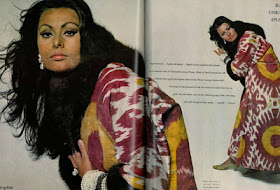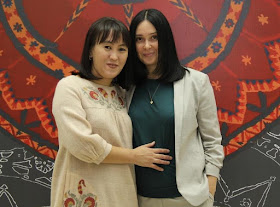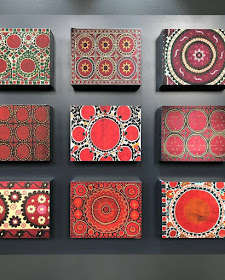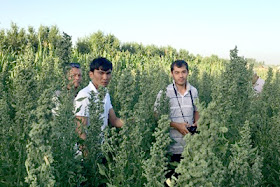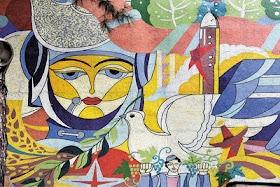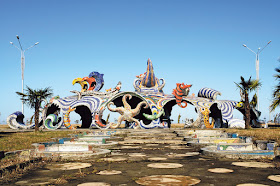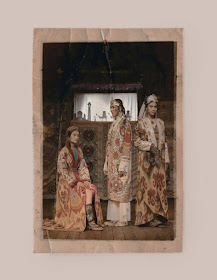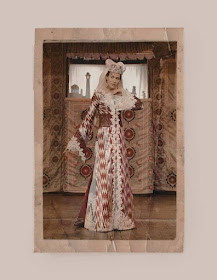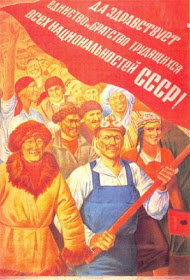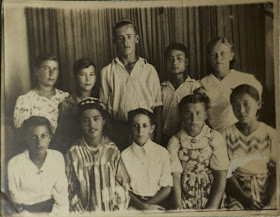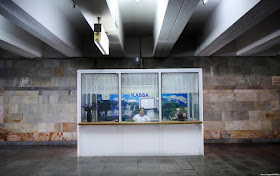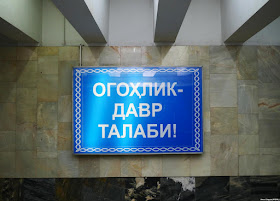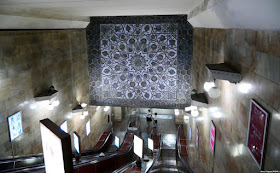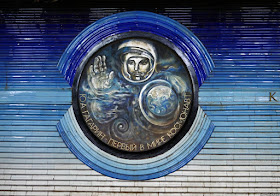 |
| Svetlana Dzardanova - initiator of the project |
This article, written by Wolfgang Kuhlner, was first published by the German Institute for Foreign Relations.
"Ala kachuu" is Kyrgyz and translates as "Grab her and run". What sounds like an entertaining popular sport is actually the widespread practice of kidnapping women and forcing them into marriage.
With her initiative "Ala kachuu is not cool!" Kyrgyz Svetlana Dzardanova is taking a stand against the alleged custom.
In 2017 Deutsche Welle – Germanyʹs international broadcasting company – reported that every 30 minutes a woman in Kyrgyzstan is abducted and forced into marriage. The fact that young women are being dragged into cars in broad daylight, usually by several men, and brought to their future husband's parents' house is not regarded as a crime by many Kyrgyz, but rather as the preservation of a tradition.
A look into the past reveals, however, that the custom never existed in this specific form. Only with the collapse of the Soviet Union at the beginning of the 1990s, the associated socio-political upheaval and the spread of poverty was there a sharp rise in the number of bride abductions in Kyrgyzstan.
Without doubt there had been abductions before, but to a much lesser extent. In the magazine "Human rights for women", published by the women's rights organisation Terre des Femmes, author Anja Heifel sees this as an expression of wrongly understood masculinity and the subordinate gender role of women. In her opinion, the custom serves as a boredom alleviator in the everyday life of young men of marriageable age – "entertainment" at the expense of young women.
"A good marriage begins with tears"
The paradox of "Ala kachuu": even the female family members of the kidnapper, who have often been forced into marriage themselves, become perpetrators during this patriarchal practice. It is their job to persuade the abducted woman in the kidnapper's house to agree to the marriage. The "bride" often hardly knows her kidnappers, if at all. She is detained and in some cases even raped.
A return to the parents' house, on the other hand, becomes impossible
after spending one night in the house of the unknown man. The social
stigma would be too grave. Women therefore often do not contradict their
fate. Despite the fact that even in independent Kyrgyzstan forced
marriage is an offence punishable by law, such deprivation of liberty
rarely ends in criminal prosecution. A Kyrgyz proverb sums up this
impotence: "A good marriage begins with tears".
Bride abduction is a crime
Svetlana, former participant in ifa's CrossCulture Programme, refuses
to accept this understanding of gender roles. Especially since she came
frighteningly close to "Ala kachuu" during her studies in the Kyrgyz
capital Bishkek, when several young men tried to kidnap her friend and
roommate.
"On television, bride abduction seems far away from one's personal
fate. But when it happens in your immediate proximity, it changes how
you think. It really got to me," Svetlana remembers. Together the two
students managed to dissuade the kidnappers from carrying out their
plan.
However, the uncomfortable feeling stayed. "The tragedy of this story
is that my roommate actually married her kidnapper a few months later",
says Svetlana. Since then, all contact has been lost between the two
friends.
There should be no future for bride abduction in Kyrgyzstan. Of that,
Svetlana is convinced. With her project "Ala kachuu is no cool!" she
has set herself the goal of convincing young people to acknowledge bride
abduction for what it really is: a crime.
 |
| During the training workshop in Bishkek |
In her opinion, it is essential that both young women and their
parents become aware of their rights, duties and responsibilities.
In
order to establish common ground, Svetlana gathered various experts
around a round table: human rights representatives, scientists,
journalists, religious scholars and interested citizens exchanged
information about legal bases and existing local projects and thus
contributed to clarifying the role of politics and media.
Tangible results
Based on the results of the expert discussion, Svetlana and some
supporters organised a four-day training course for school children from
the suburbs of the Kyrgyz capital Bishkek. Guided by expert
instructors, the students discussed stereotypical gender roles that can
take the form of discrimination or domestic violence.
Almost all participants brought personal experience to the workshop.
Many of them knew kidnap victims personally or even men involved in a
kidnapping. During the workshop they had the opportunity to exchange
their experiences. By the end of the training course many participants
were convinced that they did not want to participate in an abduction and
would even seek to protect people at risk.
In addition to the workshop, Russian and Kyrgyz information brochures
were produced and distributed in more than 40 schools and seven cities
across the country. The brochures are particularly intended to target
younger boys and girls, informing them about the alleged custom "Ala
kachuu".
At one point the number 155 can be read in large letters. The number
represents the article of the Kyrgyz Penal Code that states that the
abduction of a woman with the intention of marriage may carry a prison
sentence of five to seven years. "Let the criminal know this!" is the
demand in the brochure. "The article is public, which means that every
witness – not just the victim – has the right to report the crime."
 |
| Still from the animated film Erkinay |
A short story published by the initiative has also attracted a lot of
attention. In a two-minute animated film, the young Kyrgyz woman
Erkinay finds herself on an emotional rollercoaster: despite being
engaged to her partner Akjol, she is unable to defend herself against
kidnapping. In the end, it takes the combined efforts of the police, her
parents and her friends to free her. The film reached more than fifty
thousand young people via social media, prompting much discussion in the
appropriate channels.
Attracting cross-border attention
Looking back, Svetlana is delighted with the tangible results and the
success of her commitment: "It is a great feeling to see people
watching our film or holding the brochure in their hands and reacting to
it."
"Only recently, a partner organisation in Bishkek supported us in
printing our story in larger quantities. Now we have about 2,000 copies,
which is fantastic," Svetlana says happily. "I hope that this is just
the first step for me in offering solutions to this societal issue."
Svetlana is particularly proud of the fact that news of her project
has reached human rights activists in the neighbouring country of
Kazakhstan. There too "Ala kachuu" is a well-known issue. They are now
aiming to distribute her information brochures and launch their own
campaign against bride abduction.
Related posts:
Kyrgyz Space Program: Creating the First Kyrgyz Satellite Ever & It Will be Built by Girls
Kyrgyzstan: Social Entrepreneur Finds Foothold in Tien Shan Foothills
Kyrgyz Woman Singer Remakes Poem Traditionally Sung By Men
All-Woman Brewery Brings Craft Beer to Kyrgyzstan
